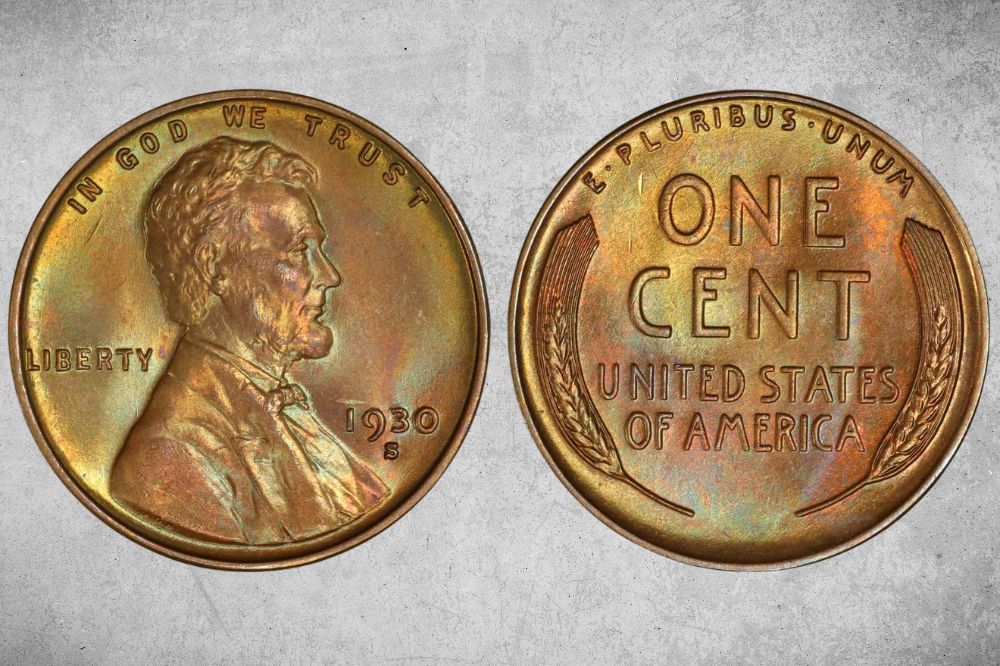Do you have a penny dated 1930 at home? Or perhaps you’re a coin collector and you’re planning to buy one? Either way, you’ll want to know how much it’s worth – and that’s where we can help!
We’re going to explore the 1930 Wheat penny value. We’ll look at the different mint marks and error coins that are out there. And we’ll tell you everything you need to know to distinguish an ordinary penny from something special.
So if you’re ready to find out more, step this way!
1930 Wheat Penny Details
- Category: Lincoln Wheat pennies
- Mints: Philadelphia, Denver, San Francisco
- Total mintage: 221,801,000
- Obverse designer: Victor David Brenner
- Reverse designer: Victor David Brenner
- Edge: Plain
- Diameter: 19.00 millimeters
- Composition: 95% copper, 5% tin and zinc
- Weight: 3.11 grams
1930 Wheat Penny Value Chart |
|||||
| Mint mark | Color | XF45 | MS63 | MS65 | MS67 |
| 1930 (P) No Mint Mark Wheat Penny Value | Brown
Red and brown Red |
$6
n/a n/a |
$20
$24 $28 |
$45
$50 $60 |
n/a
$475 $650 |
| 1930 D Wheat Penny Value
|
Brown
Red and brown Red |
$3
n/a n/a |
$27
$30 $50 |
$70
$75 $200 |
n/a
n/a $10,000
|
| 1930 S Wheat Penny Value | Brown
Red and brown Red
|
$5
n/a n/a |
$22
$25 $32 |
$70
$80 $150 |
n/a
$1,300 $15,000 |
1930 Wheat Penny Values and Varieties Guides
1930 (P) No Mint Mark Wheat Penny Value
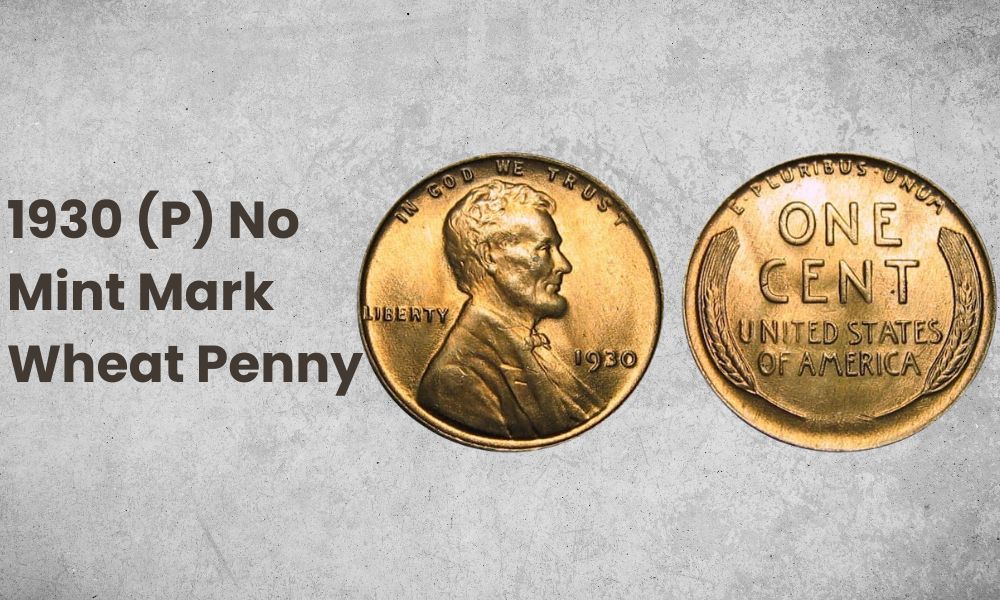
- Type: Lincoln Wheat Penny
- Edge: Plain
- Mint mark: None
- Place of minting: Philadelphia
- Year of minting: 1930
- Face value: $0.01 (one cent)
- $ price: $1 to $12,750
- Quantity produced: 157,415,000
- Designer: Victor David Brenner
If there’s no sign of a mint mark on your 1930 penny, that means it came from Philadelphia. That was the original Mint facility, and it didn’t use mint marks until 1942.
Over 157 million pennies were struck in Philadelphia in 1930. In circulated condition, then, they’re not particularly rare. What makes a difference to a coin’s value is both its condition and its color.
A brown coin in poorer condition will be worth about a dollar. In extremely fine condition – graded XF45 – the independent coin grading agency, the PCGS, values a 1930 brown Philadelphia penny at $6.
Coins that have never been circulated are known as “mint state”. They’re given a grade from 60 to 70, prefaced by the letters “MS”. And they’re more valuable than circulated coins.
A brown mint state 1930 Philadelphia Wheat penny graded MS60 is valued at $10. That rises to $45 for an example graded MS65, the lowest level at which coins are classified as “gems”. The finest known brown 1930 Philadelphia Wheat pennies are graded MS66 and valued at $65.
Coins classified as red and brown are generally more valuable, and those classified red are the most desirable of all.
A red and brown 1930 Philadelphia Wheat penny graded MS63 is valued at $24, $4 more than a brown coin of the same grade. The finest red and brown examples to have been assessed are graded MS67 and valued at $475.
A red 1930 Philadelphia Wheat penny at MS67, however, is valued at $650. And the cream of the crop is a single example graded MS68. The PCGS values that at an astonishing $12,750.
1930 D Wheat Penny Value
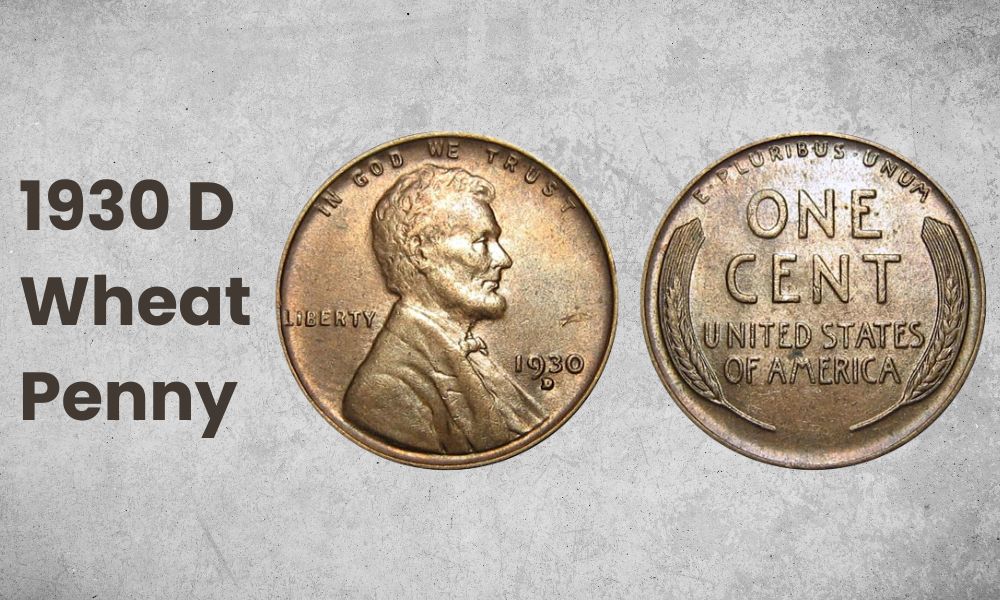
- Type: Lincoln Wheat Penny
- Edge: Plain
- Mint mark: D
- Place of minting: Denver
- Year of minting: 1930
- Face value: $0.01 (one cent)
- $ price: $1 to $35,000
- Quantity produced: 40,100,000
- Designer: Victor David Brenner
If your 1930 penny is marked with a small upper case “D”, it came from Denver. Look for the mint mark on the obverse, just beneath the date.
Far fewer pennies were struck in Denver in 1930 than in Philadelphia. The total of a shade over 40 million is less than a third of the Philadelphia production. And while circulated coins in poor condition are still worth around $1, the finest examples are much more valuable.
A brown coin graded extremely fine (XF45) is worth about $3. Uncirculated examples at MS63 and MS65 are valued at $27 and $70 respectively.
Values are slightly higher for red and brown pennies, with prices for uncirculated coins starting at $18. The finest quality red and brown 1930 Denver penny to have been graded by the PCGS is MS66, and that’s valued at $165.
The premium for a red penny graded MS60 is relatively modest – the PCGS places its value at $22. But at the highest grades, a red classification adds significant value. A red 1930 Denver penny at MS66 is valued at $675, more than four times as much as a red and brown penny at the same grade.
The finest known coin is a sole red penny graded MS67+. That last came to auction in 2020, when it sold for $33,100. Today the PCGS values it at $35,000.
1930 S Wheat Penny Value
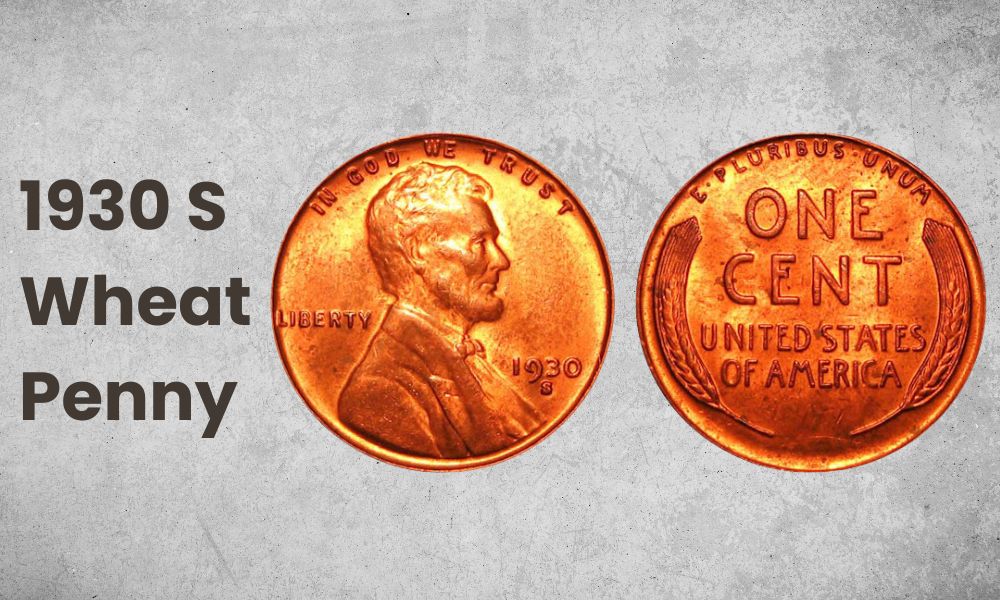
- Type: Lincoln Wheat Penny
- Edge: Plain
- Mint mark: S
- Place of minting: San Francisco
- Year of minting: 1930
- Face value: $0.01 (one cent)
- $ price: $1 to $15,000
- Quantity produced: 24,286,000
- Designer: Victor David Brenner
If there’s a small “S” on the obverse of your 1930 Wheat penny, it was struck in San Francisco. And it’s one of just over 24 million pennies struck at that Mint facility that year.
Prices for circulated coins in poor condition are around the same $1 level as Philadelphia and Denver examples. And as ever, red and brown coins are more valuable than brown, and red coins are the most valuable of all.
A brown coin graded XF45 is worth about $5. If you’re looking for a gem quality MS65 example, you can expect to pay around $70.
Uncirculated red and brown 1930 San Francisco Wheat pennies start at about $14 for a coin graded MS60. That increases to $80 at MS65. The NGC has graded one red and brown penny at MS67, and that last came to auction in 2014. The price then was $646, and values have roughly doubled since.
The finest quality red 1930 San Francisco pennies known to exist are graded MS67. 11 coins have been assessed at the same level, and they’re valued at $15,000 apiece.
Also Read: Top 20 Most Valuable Old Pennies Worth Money (Penny Collection)
1930 Wheat Penny History
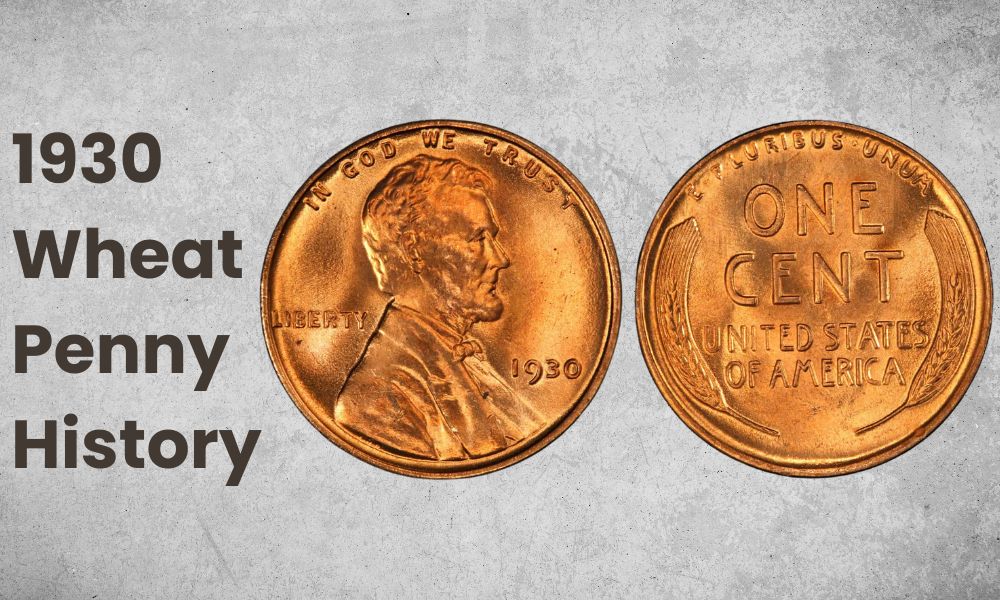
The Wheat penny is part of the series known as Lincoln pennies. These get their name from the portrait of the former president that appears on their obverse. The Wheat penny is so named because of the design on the reverse, two ears of durum wheat.
This was the first reverse to be used for Lincoln pennies, which came into production in 1909. The year marked the centenary of Lincoln’s birth. It was a special moment for another reason too: this was the first time the image of a real person had appeared on a US coin.
The images on both sides of the coin were the work of an artist named Victor David Brenner. Brenner had originally proposed a design of a tree branch on the reverse, but this was too similar to French coins. He came up with the simple but striking design of two curving ears of wheat as an alternative.
The first pennies carried Brenner’s initials on the reverse. But their size and placement attracted controversy, with some feeling that they constituted advertising. As a result, the initials were removed altogether. They were finally reinstated in 1918, this time on the obverse.
The Wheat penny continued in production until 1959. The 150th anniversary of Lincoln’s birth was marked with a new design on the reverse. The ears of wheat were replaced with a picture of the Lincoln Memorial in Washington DC.
The pennies made in 1930 were the same composition as the very first Wheat pennies – 95% copper, 5% tin and zinc. It was a recipe that would continue to be used until 1943, when copper was needed for the war effort. The pennies that year were instead made of steel coated in zinc.
In 1944, the Mint reverted to the original composition, and things remained the same for almost four decades. But in 1982, there was a switch to another recipe involving zinc. Since then, all pennies have been struck on planchets made from 97.5% zinc with a thin coating of copper.
1930 Wheat Penny Grading
As we’ve seen, knowing both the color and the condition of your 1930 Wheat penny is key to determining its value.
When copper is brand new, it’s a warm red color. With time and handling, that dims to brown.
A coin that has the red shade over at least 95% of its surface area is classified as red. One that’s brown over the same proportion of its surface area is classed as brown. And anything in between is red and brown.
And this video from CoinStudy shows you how to grade their condition.
1930 Wheat Penny Errors
1930 D Wheat Penny, Repunched Mint Mark
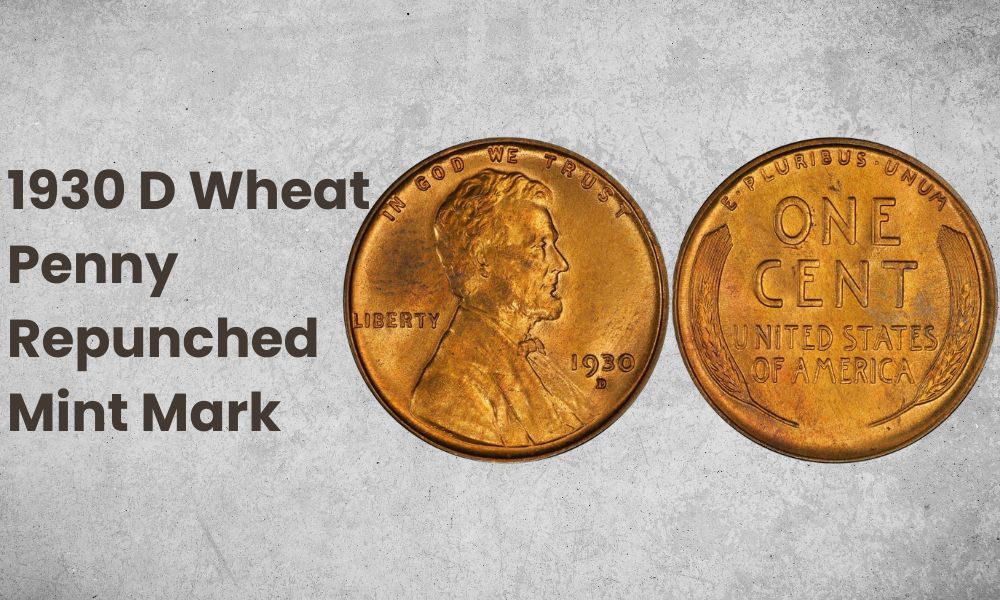
Sometimes, coins have the mint mark punched a second time. Look very closely at some of the 1930 Wheat pennies struck in Denver, and you can find exactly that error. The original “D” is just visible behind the second one.
The repunching isn’t particularly distinct – you’ll need a microscope or loupe to spot it. But nevertheless, values are significantly higher than for non-error coins. At AU53 (“about uncirculated”) a 1930 Denver penny with this error is worth about $150. That rises to $1,000 at MS63.
And if you find a red penny graded MS65 with this error, it will be worth around $3,000.
1930 S Wheat Penny, Repunched Mint Mark
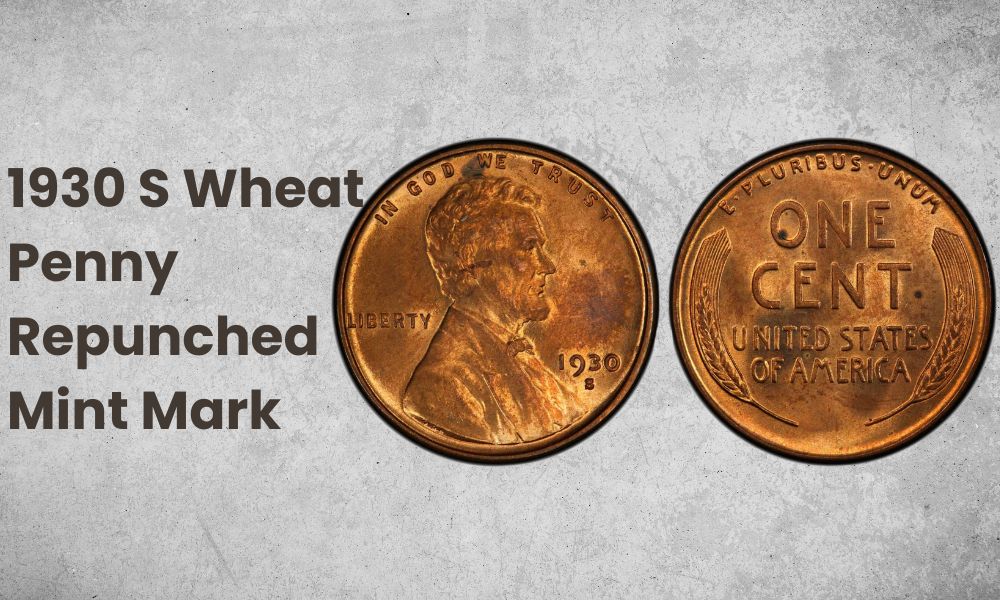
The same issue of a repunched mint mark also affected some 1930 pennies struck in San Francisco. Again, the error is difficult to spot with the naked eye. You’ll need a microscope or loupe to see the ghost of the first “S” just above the second.
Values for this coin are more modest than for the D mint mark. A coin graded AU53 will be worth around $60, rising to $100 at MS63. And the PCGS values a red coin graded MS65 with this error at $200.
Check out this YouTube video from Treasure Town to see examples of both these errors. It also walks you through errors in other Wheat pennies from the 1930s.
FAQs
Why is the 1930 penny rare?
Over 220 million pennies were struck in 1930, so even 100 years later they’re relatively easy to find. But if you’re looking for a coin in the best possible condition, that will be far more difficult. And the same goes for coins with interesting errors.
Coins in uncirculated condition – graded MS60 and above – are rarer and more valuable. And in gem grades – MS65 and higher – they can be worth serious money.
Coins that have retained the original red color of new copper through the years are particularly rare. Those that are red over at least 95% of their total surface area are classified as “red”.
They command a premium at all grades. But while that can be just a few dollars for coins in reasonable condition, the difference at the highest grades can be significant.
A 1930 San Francisco penny graded MS67, for example, is worth $1,300 if it’s red and brown. A red penny at the same grade, however, is valued at more than eleven times that amount.
What years of Wheat pennies are rare?
The 1909 S Wheat penny with the initial VDB is a considerable rarity. The initials belong to the artist who designed the coin, Victor David Brenner.
The first Wheat pennies bore his initials on the reverse, but they were criticized for being too prominent. Despite Brenner’s protests, they were removed. And they were not reinstated until 1918, when they appeared on the obverse instead.
The San Francisco Mint facility struck only 484,000 pennies in 1909 with Brenner’s initials on the reverse. As a result, they are hard to find, and extremely desirable to collectors.
Even a brown 1909 S VDB penny in the poorest condition is worth around $500. And the highest graded examples known to exist, 16 coins graded MS67 red, are each valued at $175,000.
